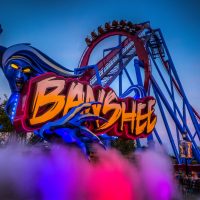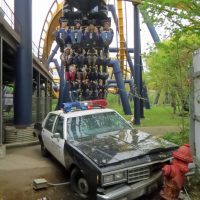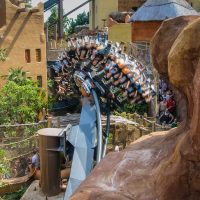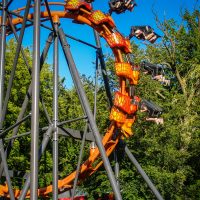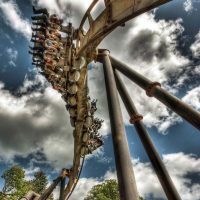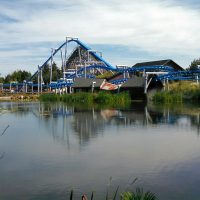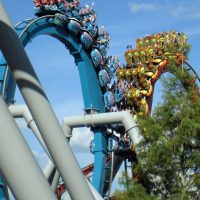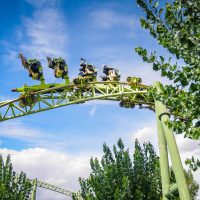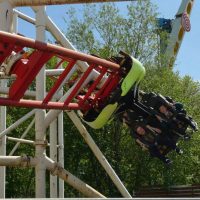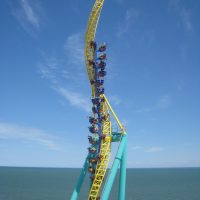a.k.a Invert, Suspended Looping Coaster, SLC
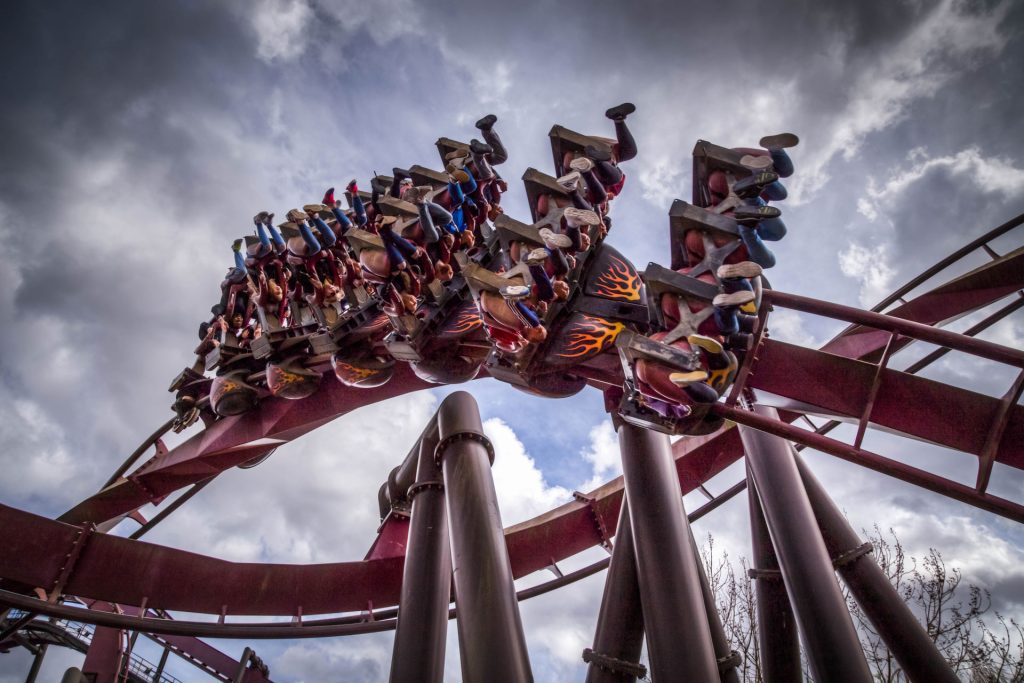
The inverted roller coaster burst onto the scene in the early 90’s thanks to Bolliger & Mabillard (B&M), who created the original Batman: The Ride. The coaster was to spark a phenomenon, as the so-called “Inverted coaster” was set to become one of the most popular designs in coaster history, sparking many other companies (such as Vekoma and Intamin) to try their hand at these fabulous rides.
The Original
B&M INVERT
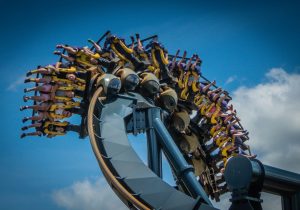
B&M first thought of making this coaster when riding a ski-lift in Switzerland and on May 9, 1992 Batman: The Ride opened at Six Flags Great America in Illinois, which sparked countless Batman: The Ride clones built throughout the USA.
Examples:
Batman: The Ride at Six Flags Great America, USA
Goliath at Six Flags Fiesta Texas, USA
Great White at SeaWorld San Antonio, USA
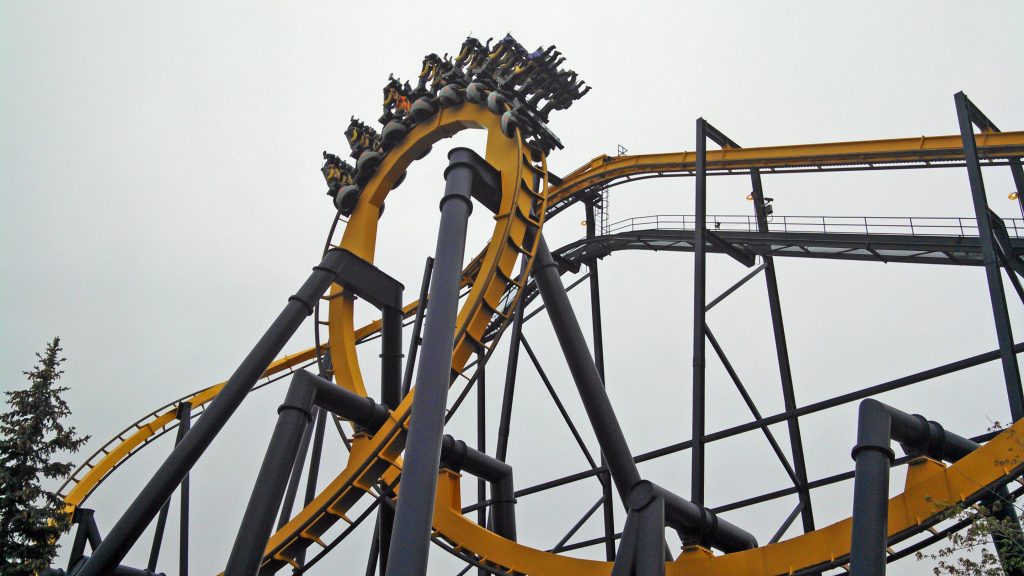
In 2013 Six Flags purchased a custom chassis from B&M that would allow the train to travel backwards. Six Flags Great America was the first to run a limited engagement of the ride that year. Six Flags Magic Mountain in California and Six Flags Over Texas did the same during the 2014 season, while Six Flags Over Georgia, Six Flags Great Adventure in New Jersey and La Ronde in Canada, followed suit for a limited time the following year. Six Flags St Louis in Missouri also ran the coaster backwards during the 2018 season.
Examples:
Batman The Ride Backwards at Six Flags Great Adventure, USA
Batman The Ride Backwards at Six Flags Great America, USA

While Batman: The Ride was under construction, a young John Wardley managed to get B&M to agree to build one at Alton Towers in the UK and Nemesis became the park’s first major roller coaster. Cedar Fair also began negotiations with B&M to build Raptor, the world’s tallest and fastest Invert of the time. Alpengeist at Busch Gardens Williamsburg opened 1997 and remains the tallest to this day. What resulted afterwards was an absolute B&M craze, with Inverted coasters being the hot new item for every park to have. To this day, they remain B&M’s most popular coaster design, averaging one being constructed almost every year since the first.
Examples:
Alpengeist at Busch Gardens Williamsburg, USA
OzIris at Parc Astérix, France
Montu at Busch Gardens Tampa, USA
Black Mamba at Phantasialand, Germany
Variations
VEKOMA SUSPENDED LOOPING COASTER (SLC)
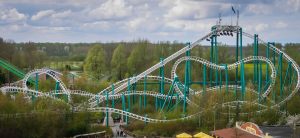
The first company to copy B&M’s ingenious design was Vekoma, who utilized their basic skeletal-looking track to create compact, cheap, and intense rides. They utilize inside running wheels and two-seat cars, often combining these cars into massive trains (upwards of 10 cars per train). However, despite their unique appearance, SLC’s are often avoided due to their usual roughness.
The SLC, however, does offer a cheaper alternative to B&M’s original Inverted design, a fact which makes it popular with smaller parks looking for a major attraction. While the basic SLC model exists in great numbers (over 25 clones operate worldwide), the SLC has also been crafted into custom designs, such as the Shenlin/Kumali series and the gigantic Odyssey at Fantasy Island in the UK.
Examples:
Condor at Walibi Holland, Netherlands
Odyssey at Fantasy Island, UK
Batman: The Ride at Six Flags Mexico
Kumali at Flamingo Land, UK
Vekoma also manufacturer Inverted Boomerang coasters. See the Boomerang coaster type page for more information.
INTAMIN SUSPENDED LOOPING COASTER
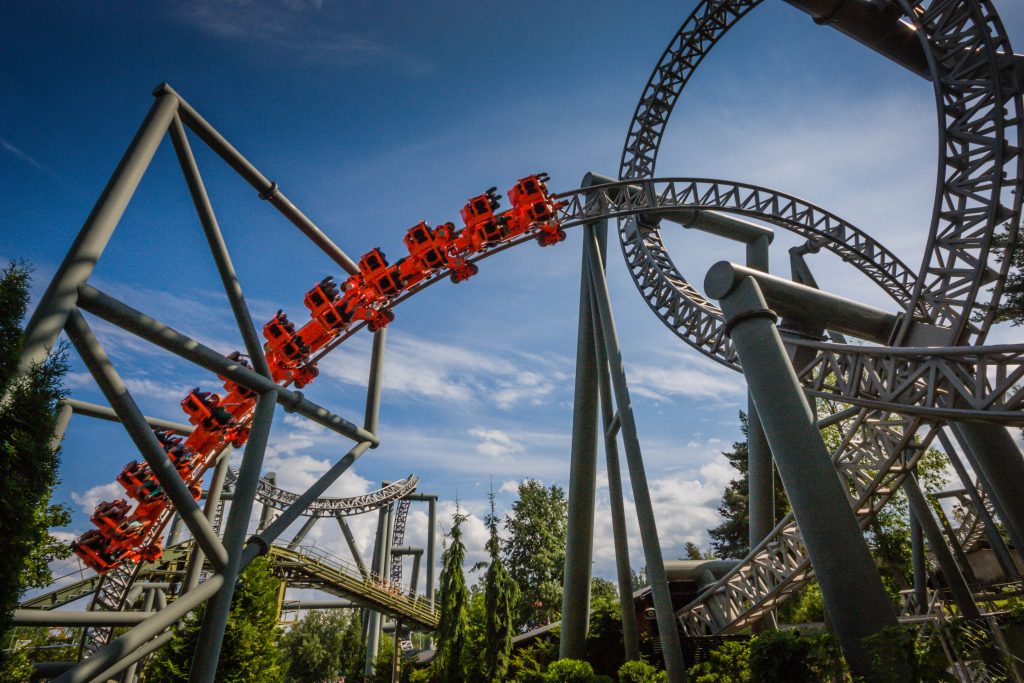
Intamin also tried their hand at a version of B&M’s popular Inverted roller coaster. Even though their trio of inverted coasters (a lineup which included the world’s only complete-circuit launched inverted coaster, Volcano: The Blast Coaster at Kings Dominion in Virginia, USA) were much smoother than Vekoma’s and were regarded as excellent rides, B&M’s perpetual domination of the Inverted coaster market means that Intamin’s unique design is often overlooked. However, Intamin has been moderately successful with a launched shuttle variation of the Inverted coaster – the Impulse coaster, which has been installed at numerous parks worldwide.
Examples:
Tornado at Särkänniemi Amusement Park, Finland
Volcano: The Blast Coaster at Kings Dominion, USA
Possessed at Dorney Park, USA
Wicked Twister at Cedar Point, USA
SARTORI RIDES ENERGIZER COBRA
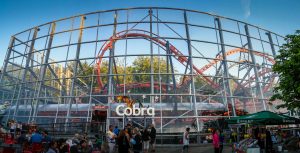
Sartori Rides began production of a compact Inverted coaster model in 2008. However, barely two weeks after opening the first one, Cobra at Tivoli Friheden in Denmark, the train derailed and fell to the ground injuring four riders.
Although the coaster has operated accident free ever since and the Italian amusement ride manufacturer still offers the model for sale, no other parks have purchased one.
Example:
Cobra at Tivoli Friheden, Denmark
GIOVANOLA INVERTED COASTER
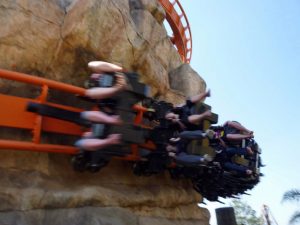
Giovanola also produced only one Inverted coaster, the Anaconda in Gold Reef City, Africa. The coaster is made using the same box-section track that B&M use on their coasters, but features two-across seating (as opposed to B&M’s 4-across).
Despite being a very intense and successful ride, Giovanola’s Inverted coasters (although still for sale) are, as with Intamin’s version, often overlooked due to B&M’s domination of the Inverted coaster market. The fact that their only installation was made in a relatively obscure park doesn’t help the coaster’s image.
PINFARI SUSPENDED LOOPING COASTER
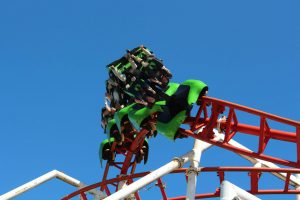
Pinfari managed to create a tiny inverted coaster for traveling use. Marketed under the model name Xpress and consisting of a tight, compact track layout, two inversions, and 2-across 5-car trains, the ride offers a fairly intense circuit, but suffers from a bit of roughness. Only four were installed at parks and the most well known, Tsunami at M&Ds Scotland’s Theme Park, was closed following an accident in 2016.
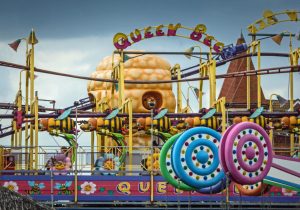
Pinfari also created the world’s only inverted Big Apple/Caterpillar coaster. Queen Bee at Button’s Pleasure Beach in the UK has a similar layout as the company’s normal kiddie coaster, only here the cars hang below the track instead of being on top on it.
